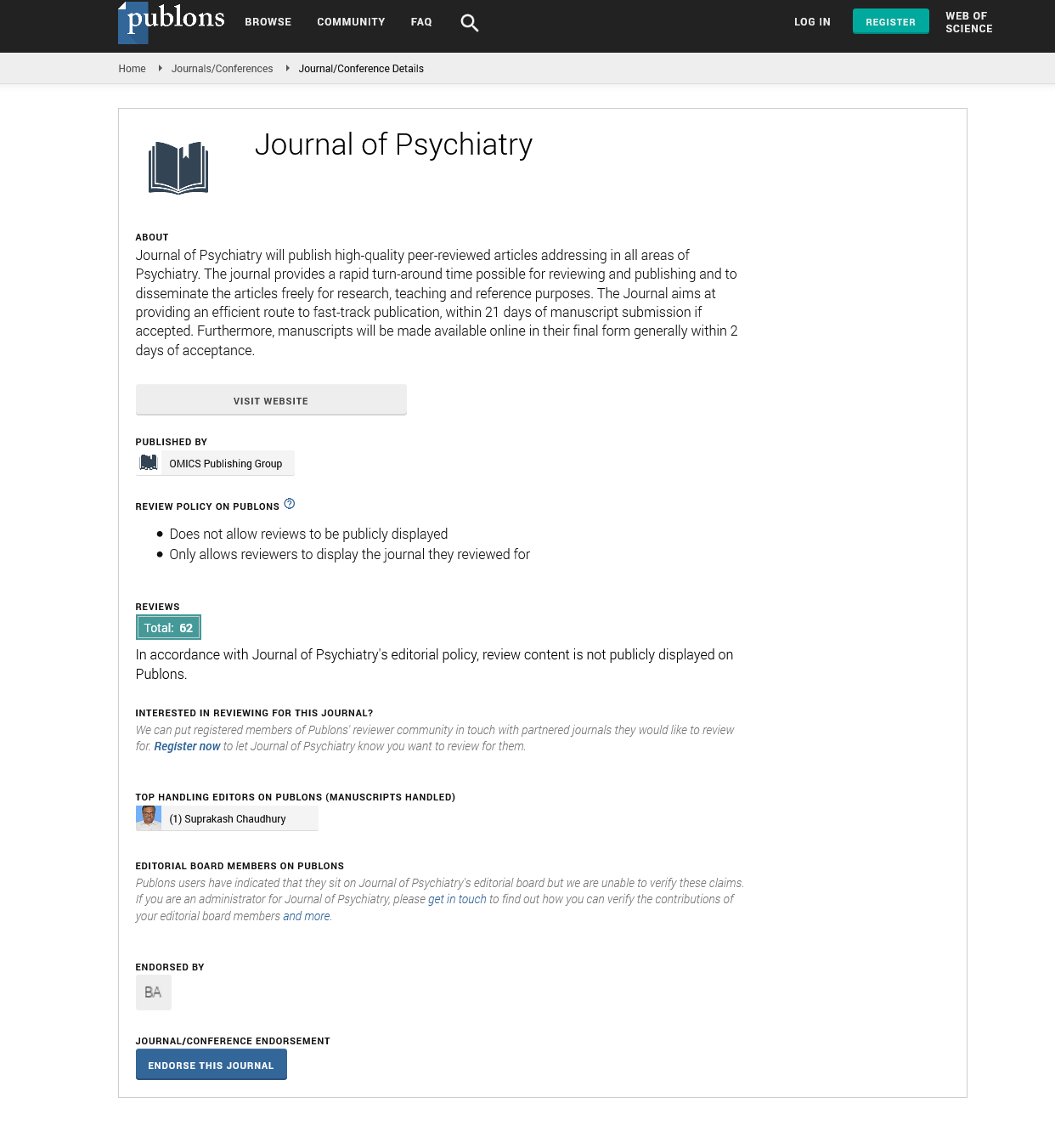Indexed In
- RefSeek
- Hamdard University
- EBSCO A-Z
- OCLC- WorldCat
- SWB online catalog
- Publons
- International committee of medical journals editors (ICMJE)
- Geneva Foundation for Medical Education and Research
Useful Links
Share This Page
Open Access Journals
- Agri and Aquaculture
- Biochemistry
- Bioinformatics & Systems Biology
- Business & Management
- Chemistry
- Clinical Sciences
- Engineering
- Food & Nutrition
- General Science
- Genetics & Molecular Biology
- Immunology & Microbiology
- Medical Sciences
- Neuroscience & Psychology
- Nursing & Health Care
- Pharmaceutical Sciences
The tri-transactional theory of stress - an empirical application to positive and negative activities
11th International Conference on Depression, Anxiety and Stress Management
January 27-28, 2025 Webinar
Ktiri Fouad
Psychology Department, Institute of Nursing Professions and Health Techniques (ISPITS), Rabat, Morocco
Scientific Tracks Abstracts: J Psychiatry
Abstract:
In this paper, we present an empirical application of our tri-transactional theory of stress [1]. According to this mathematical numerical model, the perceived stress intensity generated after encountering a stimulus (positive or negative) depends not only on this latter’s objective perceived intensity (ST), but also on the perceived previous state of stress (PSS) that a person possessed before facing the stimulus. Its resulting value is the combination of PSS and ST, which is described in the model by the formula (S = PSS + ST) [1]. The main objective of the present study is to empirically demonstrate that PSS is obligatory to take into account in the assessment of an individual state of stress. For this, we examined the combination by testing 5 different hypotheses that: 1) the value of S would simultaneously be different than PSS and STA, where STA (ST of an activity) is the objective perceived stress intensity of an activity (set of stimuli), 2) a negative activity would have a negative effect on PSS, 3) a positive activity would have a positive effect on PSS, 4) S would be associated with PSS, 5) the value of S would depend on PSS and STA. Two different activities, relaxation (savasana accompanied with music) and mental arithmetic (serial subtractions test), were used in the experiment that generated positive and negative stimuli respectively. The secondary objectives were to examine the effect of the 2 activities on gender and age and to check out if there were mutual effects between partial stresses that make up the values of PSS, STA and S. From a voluntary non-probability sample of 131 participants we collected 131 measures. Each measure included the values of PSS, STA and S, each one is composed of 3 different partial stresses (emotional, mental and physical). For statistical analyses, we used Wilcoxon signed rank test to compare between S and PSS and between S and STA, Rho Spearman to check the relationships between partial stresses (emotional, mental, and physical), total stresses (TS, TPSS and TSTA) and their positive and negative components (PS, NS). Mann- Whitney and Kruskal-Wallis tests were used to check if the results depended on gender and age respectively. Multiple linear regression was conducted to check the relationship between the dependent variable S and the independent variables PSS and STA. The results have effectively shown that the 5 hypotheses were confirmed in terms of total, positive and negative stresses. The 2 activities, relaxation and mental arithmetic, have positive and negative effects on PSS and its components (partial stresses) respectively. The intensity S is highly significantly different than PSS (p<0.05) and gender for the 2 activities, except for gender concerning the mental arithmetic (p<0.05). Emotional stress seemed to be significantly influenced by other partial stresses for relaxation activity. These empirical results prove the validity of our new model of stress applied to positive and negative activities.
Biography :
Ktiri Fouad, Psychology Department, Institute of Nursing Professions and Health Techniques (ISPITS), Rabat, Morocco

